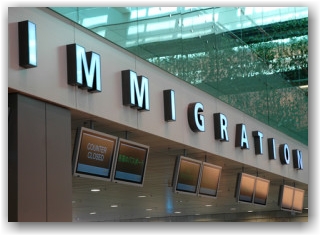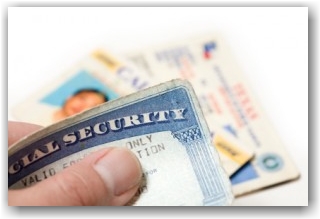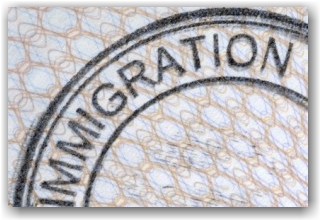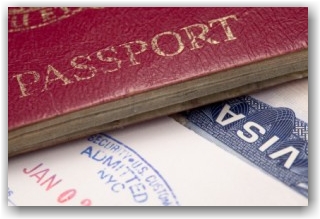Archive for the ‘Immigration News’ Category
Wednesday, January 6th, 2016
 USCIS is seeking public comments on a proposed rule that would modernize and improve certain important aspects of employment-based nonimmigrant and immigrant visa programs. USCIS is also proposing regulatory amendments to better enable U.S. employers to hire and retain certain foreign workers who are beneficiaries of approved employment-based immigrant visa petitions and are waiting to become lawful permanent residents (LPRs).
USCIS is seeking public comments on a proposed rule that would modernize and improve certain important aspects of employment-based nonimmigrant and immigrant visa programs. USCIS is also proposing regulatory amendments to better enable U.S. employers to hire and retain certain foreign workers who are beneficiaries of approved employment-based immigrant visa petitions and are waiting to become lawful permanent residents (LPRs).
Read the notice of proposed rulemaking published in the Federal Register on December 31, 2015: Retention of EB-1, EB-2 and EB-3 Immigrant Workers and Program Improvements Affecting High-Skilled Nonimmigrant Workers. The public has until February 29, 2016 to comment.
Among other things, the DHS proposals to amend its regulations entail the following:
… To clarify and improve longstanding agency policies and procedures implementing sections of the American Competitiveness in the Twenty-First Century Act (AC21) and the American Competitiveness and Workforce Improvement Act (ACWIA) related to certain foreign workers, which will enhance USCIS’ consistency in adjudication.
… To better enable U.S. employers to employ and retain certain foreign workers who are beneficiaries of approved employment based immigrant visa petitions (I-140 petitions) while also providing stability and job flexibility to these workers. The proposed rule will increase the ability of such workers to further their careers by accepting promotions, making position changes with current employers, changing employers, and pursuing other employment opportunities.
… To improve job portability for certain beneficiaries of approved I-140 petitions by limiting the grounds for automatic revocation of petition approval
… To clarify when individuals may keep their priority date to use when applying for adjustment of status to lawful permanent residence, including when USCIS has revoked the approval of their approved I 140 petitions because the employer withdrew the petition or because the employer’s business shut down.
… To allow certain high-skilled individuals in the United States in E-3, H-1B, H-1B1, L-1, or O-1 nonimmigrant status to apply for one year of unrestricted employment authorization if they:
1. Are the beneficiaries of an approved I-140 petition,
2. Remain unable to adjust status due to visa unavailability, and
3. Can demonstrate that compelling circumstances exist which justify issuing an employment authorization document.
Such employment authorization may only be renewed in limited circumstances.
… To clarify various policies and procedures related to the adjudication of H-1B petitions, including, among other things, extensions of status, determining cap exemptions and counting workers under the H-1B visa cap, H-1B portability, licensure requirements, clarification concerning which H-1B nonimmigrants are exempt from the statutory cap to ensure that those who are contributing to US research and the education of Americans may remain in the USA; and protections for whistleblowers.
… To establish a one-time grace period during an authorized validity period of up to 60 days for certain high-skilled nonimmigrant workers whenever their employment ends so that they may more readily pursue new employment and an extension of their nonimmigrant status.
These proposed changes do not take effect with the publication of the notice of proposed rulemaking. Instead, they would take effect on the date indicated in the final rule when the final rule is published in the Federal Register. Here is the proposed rule. To submit comments, follow the instructions. You may submit comments, identified by DHS Docket No. USCIS-2015-0008, by one of the following methods:
Federal eRulemaking Portal: You may submit comments to USCIS by visiting http://www.regulations.gov. Follow the instructions for submitting comments. By email: You may submit comments directly to USCIS by emailing them to: USCISFRComment@dhs.gov. Please include DHS Docket No. USCIS-2015-0008 in the subject line of the message.
The Department of Labor: Modernizing the Permanent Labor Certification Program (PERM)
DOL is engaging in rule making that will consider options to modernize the PERM program to be more compatible to changes in the US workforce, to further align the program design with the objectives of the US immigration system and the needs of workers and employers, and to enhance the integrity of the labor certification process. This is not expected to be proposed until April 2016.
Tags: AOS Portability, Department Of Homeland Security (DHS), DOL, eb-1, eb-2, eb-3, Employment-Based Immigration, H-1B, H-1B Portability, I-140 Petition, Immigration News, LPR, Proposed Immigration Legislation, Proposed Rules for H-1B and EB Immigration, USCIS
Posted in Department Of Homeland Security (DHS), Department Of Labor (DOL), H-1B Visas, Immigrant Visas (I-140 Petitions), Immigration Legislation, Immigration News, O-1 Visas, USCIS | Comments Off on Employment-Based Immigration Proposals Open for Public Comment
Thursday, October 15th, 2015
 Stakeholders are outraged by the most recent development with the so-called streamlining of the allocation of immigrant visas that are published monthly in the Department of State’s (DOS) Visa Bulletin.
Stakeholders are outraged by the most recent development with the so-called streamlining of the allocation of immigrant visas that are published monthly in the Department of State’s (DOS) Visa Bulletin.
Unless otherwise indicated on the USCIS website at www.uscis.gov/visabulletininfo,
individuals seeking to file applications for adjustment of status with USCIS in the Department of Homeland Security must use the “Application Final Action Dates” charts in the Visa Bulletin for determining when they can file such applications. When USCIS determines that there are more immigrant visas available for the fiscal year than there are known applicants for such visas, USCIS will state on its website that applicants may instead use the “Dates for Filing Visa Applications” charts in the Bulletin. The USCIS website statement is supposed to be posted within one week of the Visa Bulletin publish date.
Applicants for adjustment of status may refer to USCIS for additional information by visiting www.uscis.gov/visabulletininfo. USCIS has indicated on their website (above link) that that you may use the Dates for Filing Visa Applications chart for the corrected October 2015 and November 2015 Visa Bulletins.
Something has absolutely got to change here. This has reached a level of complete and utter absurdity.
Refer here for November filing date information.
For background information on this issue, refer here
Tags: adjustment of status, Department Of Homeland Security (DHS), DOS, Immigrant Visa Allocation, Immigration News, Permanent Residency Applications, USCIS, visa bulletin, Visa Gate
Posted in Department Of Homeland Security (DHS), Department of State, Immigrant Visas (I-140 Petitions), Immigration News, USCIS | Comments Off on DOS/USCIS’ Lame Attempt at ‘streamlining'(?) the Immigrant Visa Process
Friday, October 9th, 2015
 With the rash of RFE’s increasing year by year, this article is extremely informative and useful.
With the rash of RFE’s increasing year by year, this article is extremely informative and useful.
The important take away…..Work with evaluators that analyze USCIS policy and trends and that understand the education that is required for the type of visa being applied for. Oftentimes there is a rush to secure an evaluation before nailing down the job title and job description with the client; this is a mistake.
So, whose fault is it REALLY and why does it matter whose fault it is anyway?
Sometimes it is the attorney or evaluators fault, but sometimes it is CIS’s fault.
Sometimes it is the fault of the evaluation but not the evaluator.
Sometimes it is CIS’s fault.
Sometimes it is the candidate’s fault.
Sometimes it is no one’s fault at all.
For more, refer here
We thank Sheila Danzig, TheDegreePeople.com, for this excellent article.
Tags: Credential Evaluators, Department Of Labor (DOL), Education Evaluations, H-1B, Immigration News, LCA, RFEs, Specialty Occupations, USCIS
Posted in Department Of Labor (DOL), H-1B Visas, Immigration News, USCIS | Comments Off on H-1B RFE’s ——Who is to Blame?
Sunday, September 20th, 2015

Plain and simple, failing to comply with IRCA’s I-9 rules have, and are continuing at a rapid rate, to result in significant fines, loss of access to government contracts, an onslaught of negative publicity, business closure, criminal penalties and even imprisonment. Here are a few examples of recently settled cases in August 2015:
1) Creating discriminatory barriers for immigrants who have permission to work in the United States, $165 civil penalty with $50K in back pay:
http://www.justice.gov/opa/pr/justice-department-settles-discrimination-claim-against-louisiana-crane-construction
2) Requiring non-U.S. citizens, but not similarly-situated U.S. citizens, to present specific documentary proof of their immigration status to verify their employment eligibility, $200K civil penalty: http://www.justice.gov/opa/pr/justice-department-settles-immigration-related-discrimination-claim-against-nebraska-based
3) City of Eugene, OR improperly restricted law enforcement positions to U.S. citizens at the time of hire, even though no law, regulation, executive order or government contract authorized such a restriction. must pay a civil penalty, train its employees about the anti-discrimination provision of the INA and be subject to monitoring by the Justice Department for a period of three years!
http://www.justice.gov/opa/pr/justice-department-settles-citizenship-discrimination-claim-against-city-eugene-oregon
:::::::::::::::::::::
Immigration Compliance Group provides US inbound immigration services to individuals and employers throughout the USA and abroad. We specialize in business immigration and have a depth of experience in the IT, healthcare, arts, entertainment and sports industries, amongst others. Our services include complex business visas for investors, multinational managers, skilled professionals, outstanding individuals of high achievement (O-1, P visas, EB-1 and EB-2 Exceptional Ability cases) and PERM Labor Certification. We additionally provide employer compliance consulting services on proper I-9 (Employment Eligibility Verification) management, auditing, training, and work with our clients to develop a culture of immigration compliance. Our door is open for new clients — we extend a 20% discount on the first case with our firm. Contact us at info@immigationcompliancegroup.com or call 562 612.3996.
Tags: DOJ, Employer Compliance, Employoment Eligibility Verification, I-9 Audits, I-9 Form, I-9 Penalties, I-9/E-Verify News, ICE, Immigration News, Legal Workforce, OSC, Social Security Card, USCIS
Posted in DOJ, Employer Compliance, I-9/E-Verify News, ICE, Immigration News, OSC | Comments Off on Recent DOJ Worksite Enforcement Settlements that Shed Light on Form I-9 Employer Compliance
Monday, September 14th, 2015

I have to give USCIS kudos for working with new technology. While they test the site and complete development, go into the link and ask a question. They are asking that we try out the site. For more on the story and the test site, go here and join our new group on LinkedIn while you visit.
______
Immigration Compliance Group provides US inbound immigration services to individuals and employers throughout the USA and abroad. We specialize in business immigration and have a depth of experience in the IT, healthcare, arts, entertainment and sports industries, amongst others. Our services include complex business visas for investors, multinational managers, skilled professionals, outstanding individuals of high achievement (O-1, P visas, EB-1 and EB-2 Exceptional Ability cases) and PERM Labor Certification. We additionally provide employer compliance consulting services on proper I-9 (Employment Eligibility Verification) management, auditing, training, and work with our clients to develop a culture of immigration compliance. Our door is open for new clients — we extend a 20% discount on the first case with our firm.
Tags: Department Of Homeland Security (DHS), Emma the Virtual Assistant, Immigration Compliance Group, Immigration News, USCIS
Posted in Department Of Homeland Security (DHS), Immigration News, USCIS | Comments Off on USCIS’ Answer to “Suri” — Emma, the Virtual Assistant!
Sunday, August 9th, 2015
 We’re starting to intake alot of questions concerning these cards as they now filter through the system to employers charged with handling Form I-9 employment verification.
We’re starting to intake alot of questions concerning these cards as they now filter through the system to employers charged with handling Form I-9 employment verification.
Twelve states and the District of Columbia enacted laws to allow unauthorized immigrants to obtain a driver’s licenses. These states—California, Colorado, Connecticut, Delaware, Hawaii, Illinois, Maryland, New Mexico, Nevada, Utah, Vermont and Washington—issue a license if an applicant provides certain documentation, such as a foreign birth certificate, a foreign passport, or a consular card and evidence of current residency in the state. Eight of these states extended driving privileges in 2013. In 2015, Delaware and Hawaii enacted legislation to give unauthorized immigrants driving privileges.
Here are examples of some of the cards with various different annotations.
An employer is required to accept as a list B document an unexpired driver’s license or ID that meets the standard for I-9 purposes. What’s the standard? A photo and other identifying information such as, their name, date of birth, gender, height, eye color and address. The underlying issue here is state law vs. immigration (federal law) and USCIS regulations concerning Form I-9.
Both USCIS and OSC concur, despite the various different types of annotations that appear on driver authorization cards, that they meet the regulations for an acceptable List B document if they adhere to the standards mentioned above.
An employer is required to examine the documents presented by its employee and determine whether they meet Form I-9 requirements. If the employer accepts any document, including a state-issued license or driver authorization card, or other type of ID with a limiting notation as a List B document, the employer must also examine a List C document that evidences employment authorization in order to make a proper determination if the individual is eligible for employment.
Employers may reject a document if it does not reasonably appear to be genuine or to relate to the employee. Rejecting a document that satisfies Form I-9 requirements may constitute illegal discrimination under the Immigration and Nationality Act’s anti-discrimination provision or Title VII of the Civil Rights Act of 1964.
USCIS has published a set of
FAQs on this topic that contain critical information and should be read, discussed and made a part of your training program for those charged with processing I-9 forms. Should you have any questions on this matter or any other concerns regarding employer compliance issues, please feel free to contact us at
info@immigrationcompliancegroup.com or call
562 612.3996.
Tags: Driver Authorization Cards, Driver's License, Employer Compliance, I-9 Form, I-9/E-Verify News, ID Cards, ID Cards for Undocumented Immigrants, Immigration News, Legal Workforce, List B Documents
Posted in Employer Compliance, I-9/E-Verify News, ICE, Immigration News, OSC, Social Security, USCIS | Comments Off on Can Driver Authorization Cards be used as a List B Document for I-9 Employment Verification?
Friday, July 17th, 2015

USCIS released details of proposed new changes to the E-Verify program on June 8, 2015 that were published this week. The notice, found here, proposes several changes to E-Verify and seeks public comments until August 7, 2015 and links to new Q&A. These changes will affect all employer users, including Federal Acquisition Regulation (FAR) contractors.
The three critical changes entail:
1) Requirement that employers re-verify the continuing work authorization of employees within three “Employer” days of the expiration of the employee’s “last” grant of work authorization.
a) This requirement tracks the current continuing duty of employers to re-verify expiring work authorization of employees in Section 3 of the I-9 form or, in the alternative, to complete a new I-9.
b) This differs from the I-9 process in that the E-Verify time frame for re-verification of the employment authorization is three days after its expiration, whereby the I-9 regulations state that an employer re-verify the expiring work authorization of an employee on or before the day it expires. In E-Verify, the proposed process cannot be started until after the expiration of the employment authorization.
c) The re-verification requirement extends to employees hired before an employer began participating in the E-Verify program. Thus, the proposed change would require that employers re-verify an employee’s expiring work authorization regardless of whether they have previously created an E-Verify case for that employee or not. This again differs from the current E-Verify program rules that explicitly prohibit an employer verifying the work authorization of employees hired before the employer began participating in the program (with the exception of FAR E-Verify employers).
2) Requirement that employers print the re-verification confirmation page and retain it along with an employee’s I-9 records or record the E-Verify re-verification case number on the employee’s I-9 Form.
3) Provides a process for employees to seek review of E-Verify Final-Nonconfirmations.
::::::::
Immigration Compliance Group provides US inbound visa services to individuals and employers throughout the USA and abroad. We specialize in business immigration and have a depth of experience in the IT, healthcare, arts, entertainment and sports industries, amongst others. Our services include complex business visas for investors, multinational managers, skilled professionals, outstanding individuals of high achievement and PERM Labor Certification. We additionally provide employer compliance consulting services on proper I-9 (Employment Eligibility Verification) management, auditing, training, and work with our clients to develop a culture of immigration compliance.
Tags: Agriculture, E-Verify, Employer Compliance, FAR E-Verify, Federal Contractors, I-9 Compliance, I-9 Form, I-9/E-Verify News, ICE, Immigration News, Legal Workforce, OSC, Seasonal Workers, USCIS
Posted in Agriculture, Employer Compliance, Federal Contractors, I-9/E-Verify News, ICE, Immigration News, OSC, USCIS | Comments Off on E-Verify Announces Major Proposed Changes
Saturday, June 20th, 2015
 Since early 2015, qualified California residents have been able to apply for and receive a driver’s license issued by the Department of Motor Vehicles without proving that their presence in the United States is authorized under federal law. All employers must accept the AB 60 driver’s license as a Form I-9 List B Identity document if the license reasonably appears to be genuine and to relate to the individual. As with all permissible List B driver’s licenses, the AB 60 driver’s license must contain either a photograph or list the individual’s name, date of birth, gender, height, eye color, and address. The AB 60 driver’s license only documents the employee’s identity; California employers must still examine a List C document that establishes employment authorization, such as a Social Security card or birth certificate.
Since early 2015, qualified California residents have been able to apply for and receive a driver’s license issued by the Department of Motor Vehicles without proving that their presence in the United States is authorized under federal law. All employers must accept the AB 60 driver’s license as a Form I-9 List B Identity document if the license reasonably appears to be genuine and to relate to the individual. As with all permissible List B driver’s licenses, the AB 60 driver’s license must contain either a photograph or list the individual’s name, date of birth, gender, height, eye color, and address. The AB 60 driver’s license only documents the employee’s identity; California employers must still examine a List C document that establishes employment authorization, such as a Social Security card or birth certificate.
View the Example of the AB-CA Driver’s License annotated with “Federal Benefits Apply”.
Tags: CA AB-60 Driver's License, DACA, Department Of Homeland Security (DHS), Employer Compliance, EMPLOYMENT ELIGIBILITY, I-9 Form, I-9/E-Verify News, ICE, Immigration News, Legal Workforce, OSC, Social Security, USCIS
Posted in DACA | DAPA, Employer Compliance, I-9/E-Verify News, ICE, Immigration Legislation, Immigration News, OSC, Social Security, USCIS | Comments Off on California New AB 60 Driver’s License: Is it Good for Employment Eligibility?
Monday, February 2nd, 2015

This is an excellent resource released by USCIS in both English and Spanish. You can also enter your email address and sign up for updates.
These flyers explain the guidelines that take effect for expanded DACA on Feb. 18, 2015, and how people can prepare for requesting DAPA once it becomes available in mid-to-late May.
Tags: DACA, DAPA, Executive Actions, Immigraiton Reform, Immigration News, USCIS, Work Authorization
Posted in DACA | DAPA, Immigration Legislation, Immigration News, USCIS | Comments Off on DACA | DAPA — Get the Facts Here
Thursday, January 29th, 2015

It’s almost that time of year again for H-1B filing season FY 2016 (commencing April 1, 2015), and it’s not too early for employers to be discussing hiring needs with their management team and assessing where in the organization they wish to sponsor H-1B professionals, and identifying potential candidates that they may want to sponsor for H-1B status. This could include, for example, recent graduates employed pursuant to F-1 Optional Practical Training, foreign nationals in TN status that the company may wish to sponsor for permanent residence, and candidates in L-1 status working for other employers or in some other non-immigrant classification who would need to change their status to H-1B in order to extend their stay and accept new employment.
The H-1B job offer and the job description must be for a specialty occupation that requires a minimum of a bachelor’s degree or its foreign equivalent.
What is the definition of a specialty occupation? A specialty occupation requires the theoretical and practical application of a body of specialized knowledge along with at least a bachelor’s degree or its US equivalent. For example, architecture, engineering, IT, mathematics, physical sciences, social sciences, medicine and health, education, business specialties, accounting, law, and the arts are considered specialty occupations.
Small to medium-size companies are frequently asked to justify why the position requires someone with a bachelor’s degree and to explain, through various types of evidence including organizational charts, examples of work being produced, the education of previous employees in the position, etc., why their business is more unique than other similar businesses in their industry that they would require a candidate with a bachelor’s degree in a particular position.
Bachelor’s Degree equivalency can be attained through a single-source foreign degree that meets US standards, a combination of a degree and work experience, or a work experience alone equivalency that meets the “3 for 1” rule; namely, that 3 years of work experience is equivalent to 1 year of university level education (this requires an expert credential evaluation by a service or university that is authorized to evaluate work experience for degree equivalency).
Note: Bear in mind that if you have a skilled immigration professional that has a strategy in place for their green-card sponsorship (permanent residency), it is essential that the degree and its equivalency be carefully reviewed so that it will be compatible with the classification under which they will file their labor certification, the first step in the green-card process.
USCIS now requires very detailed job descriptions for H-1B visa petitions that contain the position summary, duties and responsibilities, as well as the percentage allocation spent on each job duty. It is hard to imagine that a job description with a 15-bullet point list of duties and a full page in length is insufficient, but when you work with a skilled immigration practitioner, this can be successfully argued against the O*NET occupational classification system and the Occupational Outlook Handbook, which is the primary source of job information for USCIS and the Department of Labor.
In summary: Employers need to be prepared with complete job descriptions for their H-1B prospective employees and document the need for a degreed professional thoroughly in their casework.
Discuss your H-1B requirements as well as any other business immigration matters by contacting us at info@immigrationcompliancegroup.com, or call 562 612.3996.
Tags: DOL, EAD, F-1 Students, H-1B Degree Requirements, H-1B Filing Season, H-1B Filing Tips, H-1B Job Descritions, H-1B Visa, OPT, Specialty Occupations, USCIS
Posted in Department Of Labor (DOL), H-1B Visas, Immigration News, Staffing Agencies, USCIS | Comments Off on H-1B Visas – The Job Description and Degree Requirement
 USCIS is seeking public comments on a proposed rule that would modernize and improve certain important aspects of employment-based nonimmigrant and immigrant visa programs. USCIS is also proposing regulatory amendments to better enable U.S. employers to hire and retain certain foreign workers who are beneficiaries of approved employment-based immigrant visa petitions and are waiting to become lawful permanent residents (LPRs).
USCIS is seeking public comments on a proposed rule that would modernize and improve certain important aspects of employment-based nonimmigrant and immigrant visa programs. USCIS is also proposing regulatory amendments to better enable U.S. employers to hire and retain certain foreign workers who are beneficiaries of approved employment-based immigrant visa petitions and are waiting to become lawful permanent residents (LPRs).







